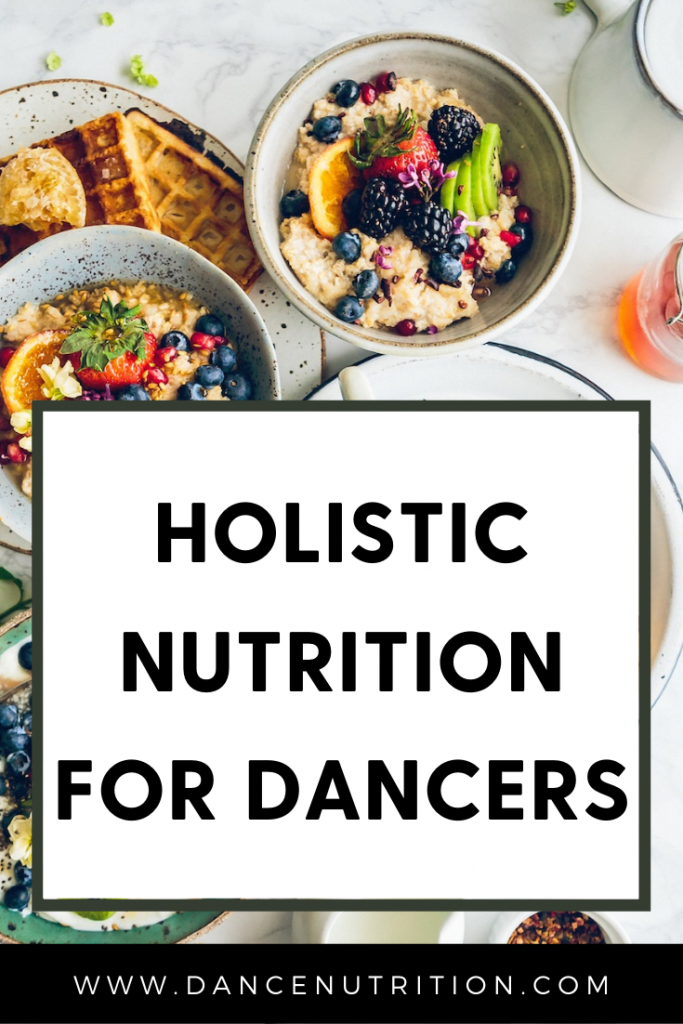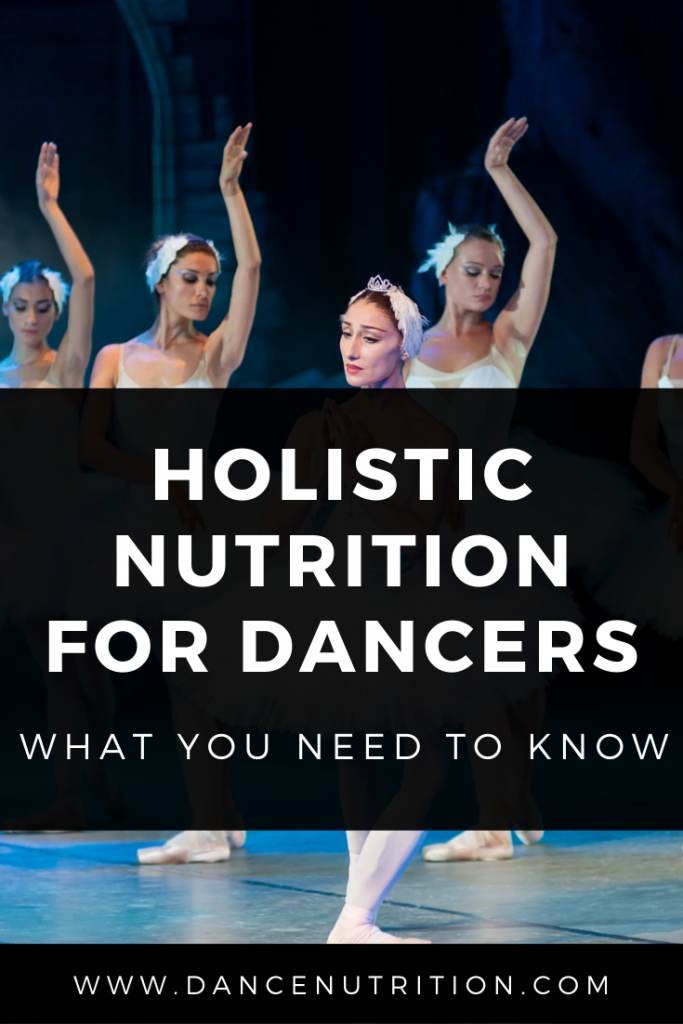The Healthy Dancer® Complete Guide to Holistic Nutrition for Dancers
A holistic approach to nutrition for dancers is a topic that I’ve been asked a lot about recently. Your relationship with food doesn’t have to be obsessive or compulsive. Dancers can learn how to utilize food as a tool that supports their whole selves: mind, body, and soul. But how can dancers utilize a holistic approach for their performance needs?
Definition of holistic nutrition for dancers
A holistic approach is not prescriptive but rather, guided. Dancers utilize self-discovery to inform their best decisions around food and movement. Ultimately, holistic nutrition supports a dancer’s whole being, including their physical, mental, and emotional wellbeing.
Many dancers believe that in order to pursue a successful career, one needs to focus 200% of their energy on their dancing. While motivation and determination are major players in a dancer’s performance, it’s essential that dancers learn how to balance the vast experiences in life outside of the studio. A holistic approach to dance nutrition formulates a plan for the individual dancer who strives to discover what works for them. There is no one-size-fits-all approach to holistic nutrition for dancers.
Why is nutrition important to a dancer’s performance?
Did you know that dancers are three times more likely to struggle with an eating disorder when compared to the general population? Because of the vulnerable nature of dancers to perfectionism, disordered eating, and eating disorders, it’s critical that dancers, dance educators, and dance parents rely on sound sources for nutrition-, weight- and lifestyle-related education.
As mentioned in this article, dancers can benefit from understanding the benefits of nutrition not only to support their physical endurance and strength but also, to reduce their risk for injury. With an excess of nutrition information flooding our social feeds, dancers who strive for a holistic approach often stumble into patterns of “clean eating.” This is often the result of extrapolated research that is used to suggest the avoidance of certain foods and ingredients like saturated fats (ie. butter), refined sugars, and other processed foods (read more about this here).
How can dancers integrate holistic nutrition and performance nutrition?
First, you’ll want to address your relationship with food in order to dismantle destructive messages of diet- and wellness- culture and make peace with the very foods you might feel are “bad,” “unhealthy,” or “off-limits.” This encompasses the first two stages of The Healthy Dancer framework. Through this work, we detangle the confusion behind food guilt and emotional eating, two aspects that dancers often feel might be limiting to their long-term success both on the stage and off the stage. Simultaneously, we utilize compassionate self-care to rebuild our relationships with our bodies.
3 Strategies for Dancers Seeking Holistic Nutrition
#1: Utilize self-discovery to formulate a holistic approach to nutrition
A holistic approach to nutrition for dancers goes beyond just listening to hunger and fullness cues. In the pursuit of creating a supportive relationship with food, dancers learn how to decipher between the five different types of hunger to support their physical, emotional, and mental well-being. Dancers learn how to decipher between:
- Physical (or Biological) Hunger, can be felt as hunger pangs, stomach discomfort, a grumbling tummy, light-headedness, “hanger,” irritability, fatigue, and headaches. Read this article to learn more.
- Taste Hunger exemplifies how food plays a major role in celebrations, holidays, cultural traditions, and social settings. Read this article to learn more.
- Practical Hunger to plan for busy (and active) schedules.
- Emotional Hunger honors your emotional connection to food as a very human (and normal) experience without shame or ridicule. Read this article to learn more.
- Rebound Hunger is a temporary phase that results from deprivation and is best when navigated alongside the help of a licensed professional.
#2: Integrate performance nutrition without obsession
To pursue a holistic approach to nutrition for dancers, it’s recommended that dancers integrate the principles of intuitive eating with performance nutrition in order to utilize an evidence-based approach to fueling their bodies.
Remember: restrictions don’t work. Instead, prioritize inclusion. What can you add to your meal plan? Balance is encouraged. This means you’re including a source of protein, carbohydrates, and fat in each meal or snack. Whole grains, produce (vegetable and fruit), legumes, nuts, seeds, and avocados are examples of nourishing options to add to your holistic meal plan. Dancers can utilize this self-study course to learn more about integrating the principles of performance nutrition in a way that is not obsessive.
#3: Seek professional support
Seeking support from a credentialed Registered Dietitian Nutritionist (RD or RDN) or Licensed Dietitian Nutritionist (LD or LDN) is recommended for nutrition support. This work can be further advanced with a supportive interdisciplinary team that includes mental health therapists and coaches. Here are additional resources to get started:
- Understand the role of the three macronutrients on your plate and in your body.
- 3 Common Dance Nutrition Questions, Answered
- Intuitive Eating For Dancers
The Healthy Dancer® is available for dancers interested in leveling up their nutrition. This program includes personalized support in the form of bi-monthly coaching calls and virtual guidance. Group coaching is another economical option that is available bi-annually through The Healthy Dancer® Summer Intensive and The Healthy Dancer® Winter Intensive. These offer an ongoing community, professional masterclasses, workshops, and more.




